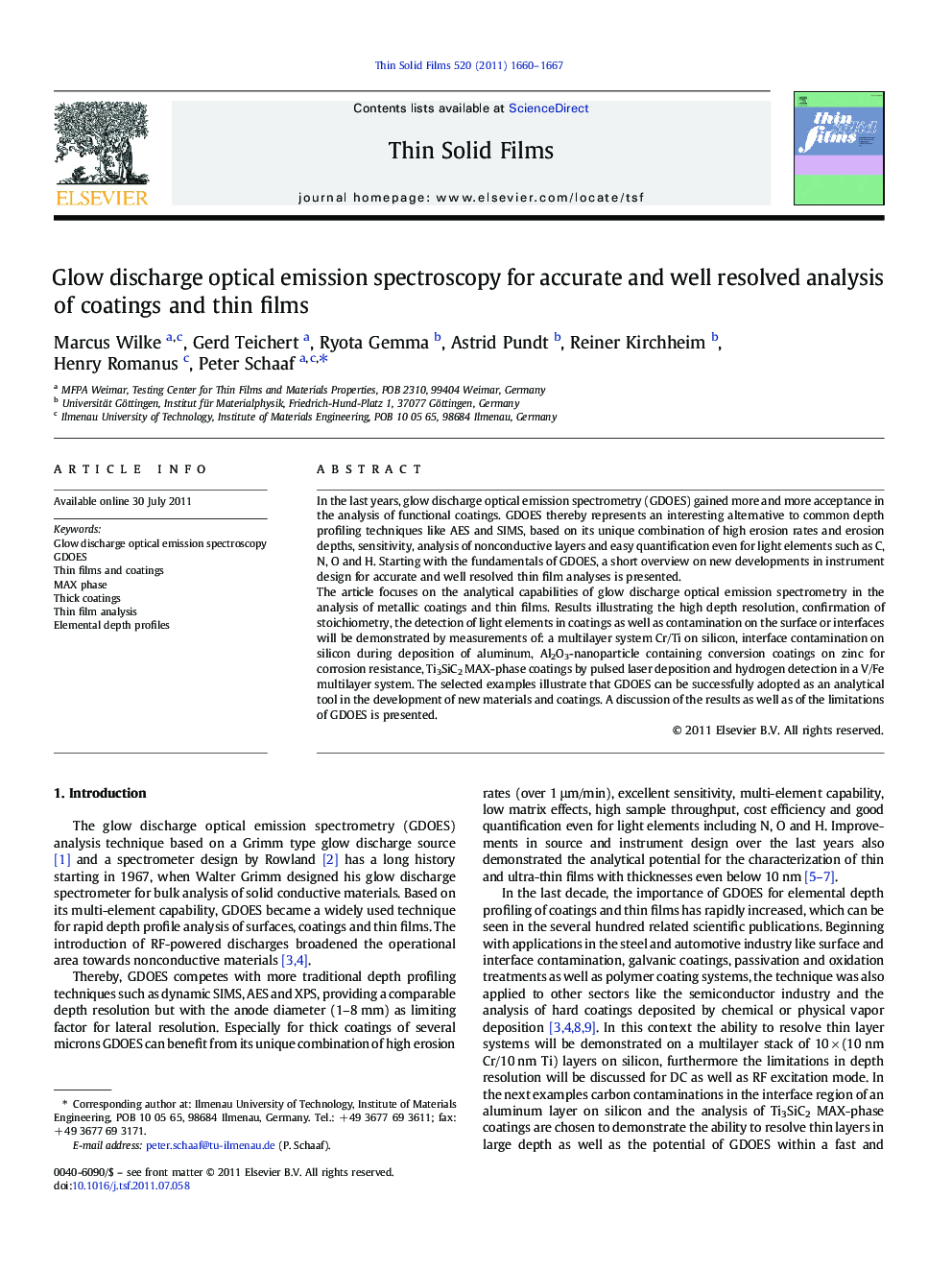| Article ID | Journal | Published Year | Pages | File Type |
|---|---|---|---|---|
| 1668244 | Thin Solid Films | 2011 | 8 Pages |
In the last years, glow discharge optical emission spectrometry (GDOES) gained more and more acceptance in the analysis of functional coatings. GDOES thereby represents an interesting alternative to common depth profiling techniques like AES and SIMS, based on its unique combination of high erosion rates and erosion depths, sensitivity, analysis of nonconductive layers and easy quantification even for light elements such as C, N, O and H. Starting with the fundamentals of GDOES, a short overview on new developments in instrument design for accurate and well resolved thin film analyses is presented.The article focuses on the analytical capabilities of glow discharge optical emission spectrometry in the analysis of metallic coatings and thin films. Results illustrating the high depth resolution, confirmation of stoichiometry, the detection of light elements in coatings as well as contamination on the surface or interfaces will be demonstrated by measurements of: a multilayer system Cr/Ti on silicon, interface contamination on silicon during deposition of aluminum, Al2O3-nanoparticle containing conversion coatings on zinc for corrosion resistance, Ti3SiC2 MAX-phase coatings by pulsed laser deposition and hydrogen detection in a V/Fe multilayer system. The selected examples illustrate that GDOES can be successfully adopted as an analytical tool in the development of new materials and coatings. A discussion of the results as well as of the limitations of GDOES is presented.
